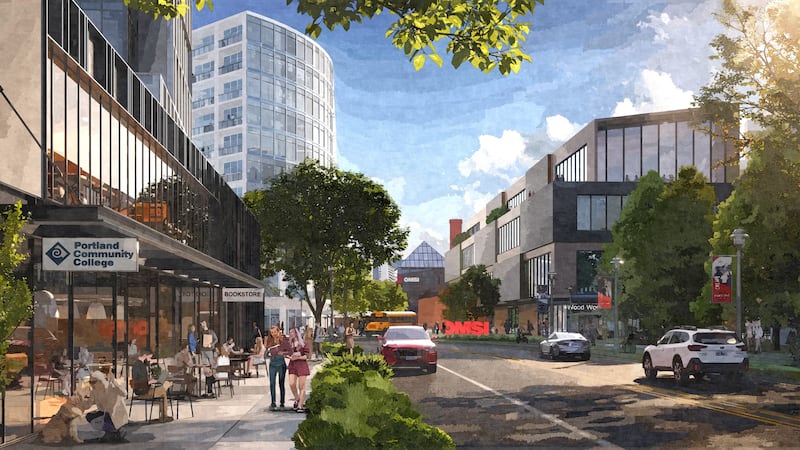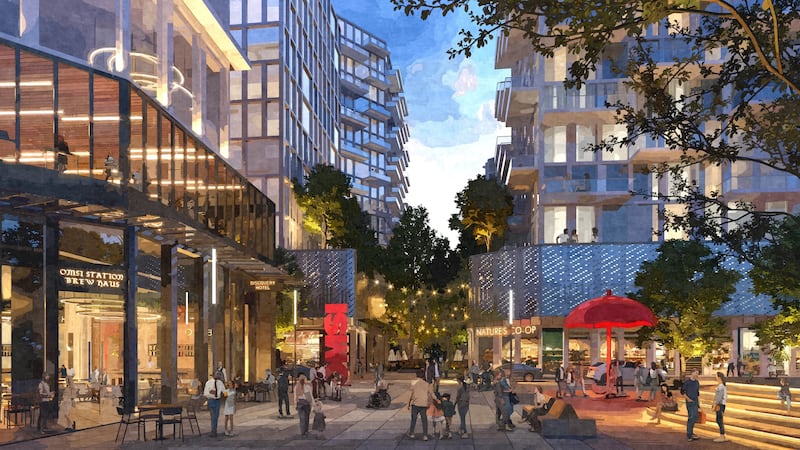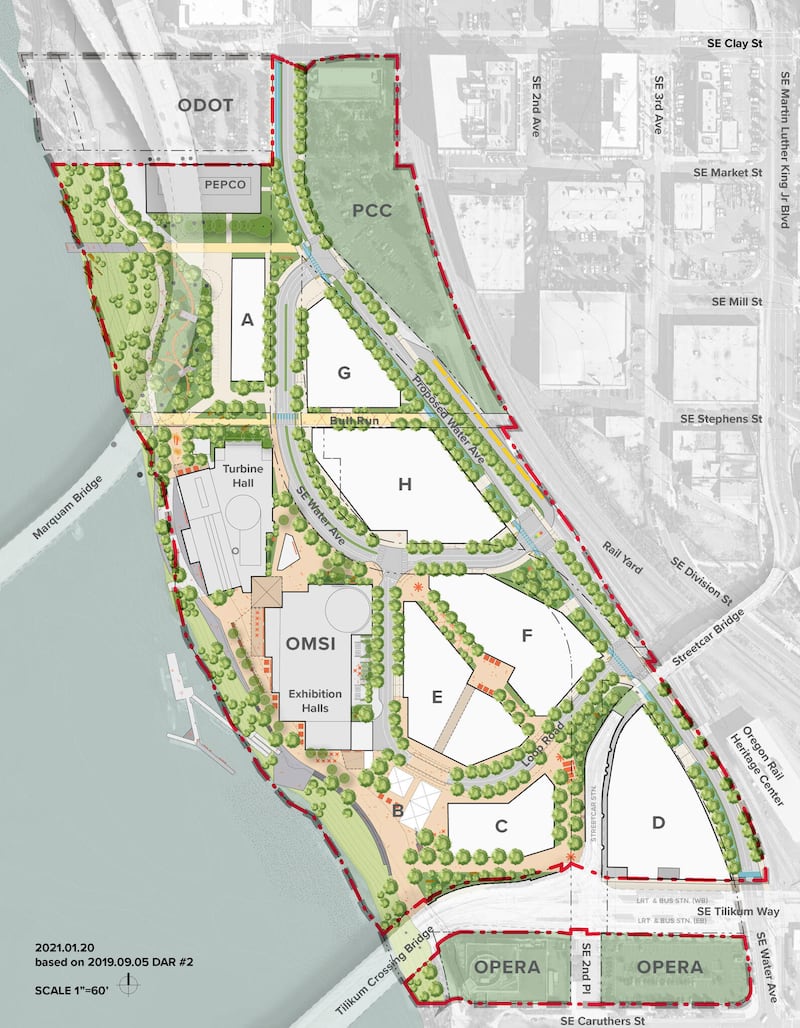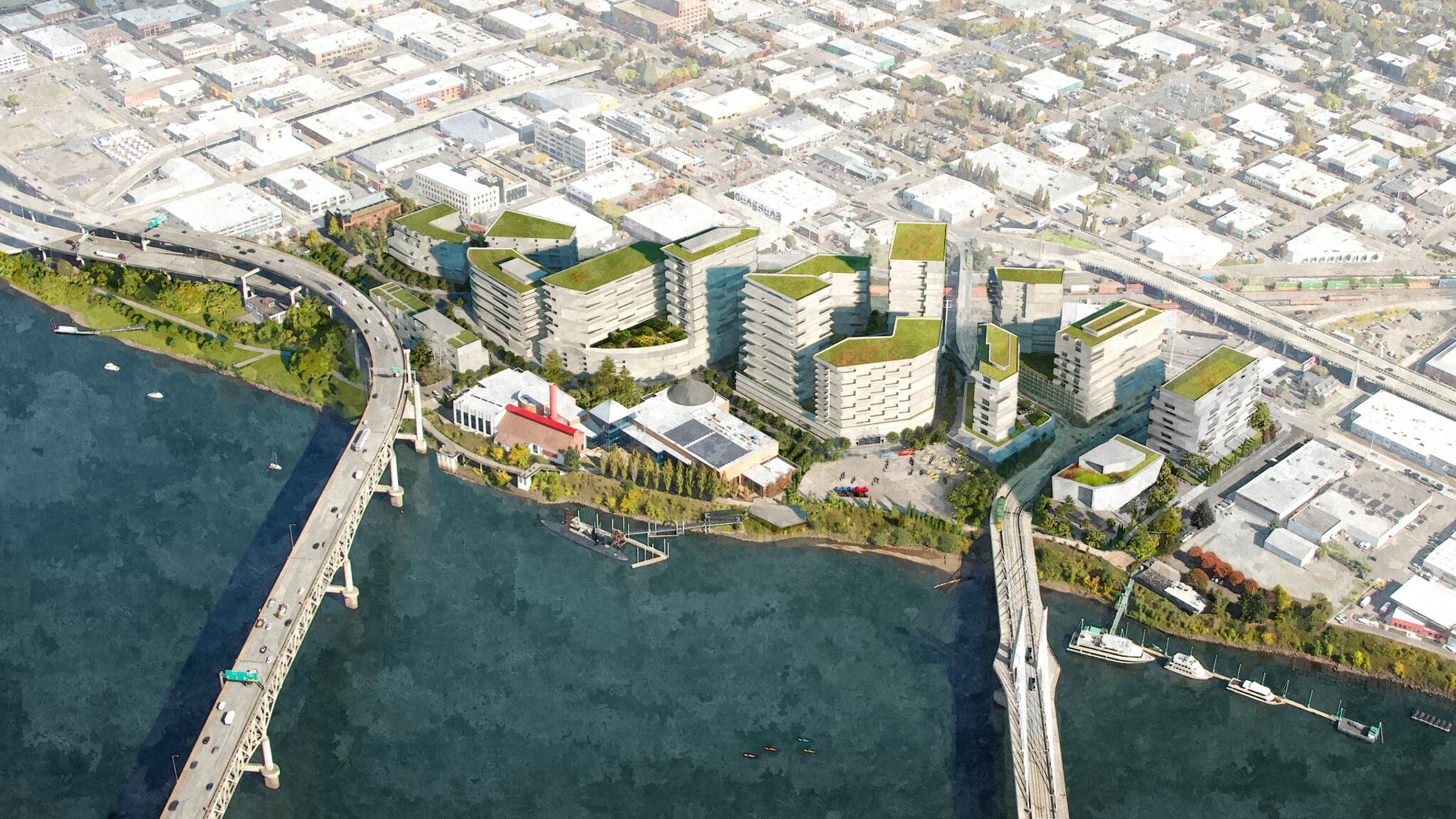The OMSI District on the east bank of the Willamette River is now over a decade old, and still mostly theoretical.
On Wednesday, the Oregon Museum of Science and Industry shared updated renderings of its plans, showcasing swanky glass apartment buildings, lively storefronts and communal green spaces covering 10 blocks of the inner eastside.
The project launched in 2008 and has received money from the city, Metro and the state to create a neighborhood district with a focus on climate and science.
The plans include: 1,200 housing units, a waterfront education park focusing on Indigenous heritage, mixed-use commercial and residential buildings, and new storefronts.
OMSI’s plan will be submitted to the city this month for review.
Back in 2014, manufacturers, warehouse operators and residents of the inner eastside worried that OMSI’s development might look like a replication of the Pearl District: swanky coffee shops, cutesy boutiques, and lots and lots of apartment buildings—replacing the more industrial, blue-collar feel surrounding OMSI (”Science and Industry”, WW, June 17, 2014).

The renderings shared Wednesday reveal the friction between maintaining a core of industrial Portland and a city in desperate need of more housing.
Developers of the 1,200 new units of housing will set aside 20% of the dwellings for low-income Portlanders, per city regulation.

The new developments will stand alongside the Portland Opera, Portland Community College and a new Center for Tribal Nations, and the sketches of the buildings show green spaces atop each mixed-use building.
OMSI says the education park, created with the input of Indigenous groups during the planning process and which received three-quarters of a million dollars from a Metro grant, will include “public green space, plazas, restored riverfront habitat, hands-on outdoor science programming and interpretation that affirms, sustains and shares Indigenous ecological knowledge and cultural connection to the river.”


